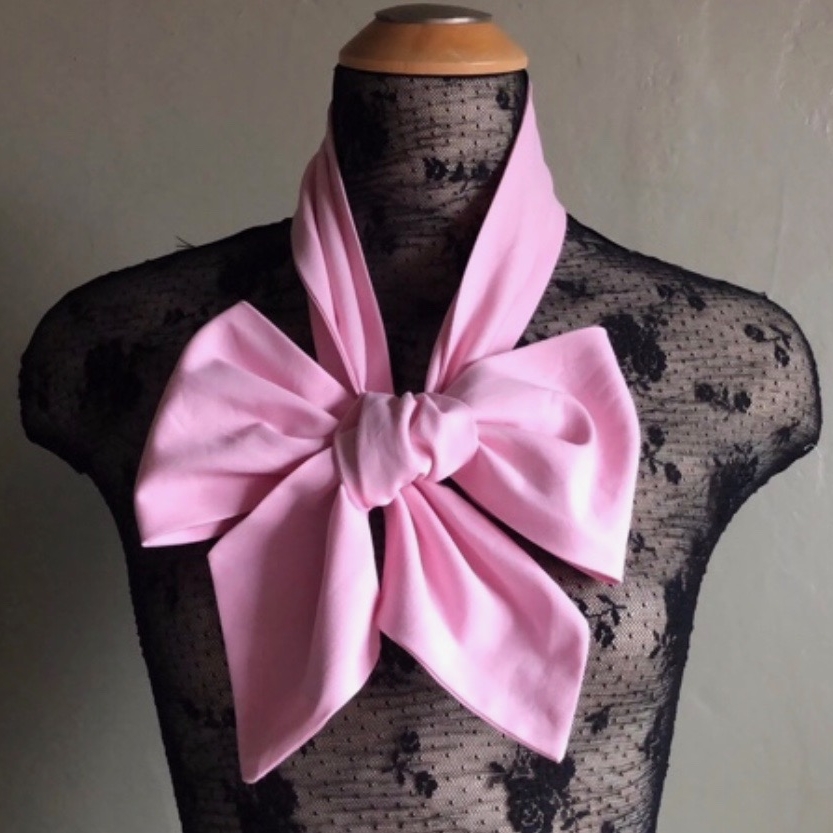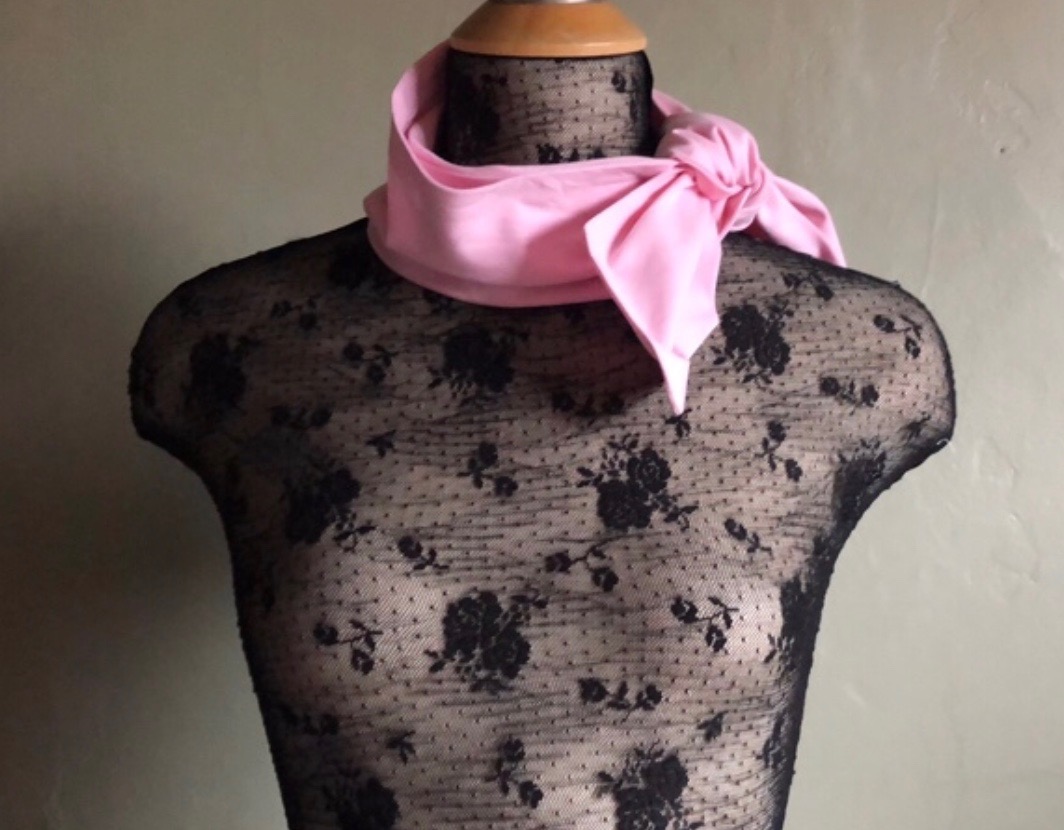How to Tie a Bow Tie
Don't be intimidated by tying a bow tie. It's a lot like tying your shoes. The difference between tying a regular bow (like your shoe laces) and a bow tie, is that you want a flat front in the middle with the knot happening at the back. The tricky part happens at Steps 6 and 7 where you have to poke the corner of the bow through to complete the bow. Hold a finger in there to help you keep track of where the opening is. Better yet, have someone help tie it on you!
How to Tie a Neck Tie
Shown above is a half Windsor knot. It creates a little less symmetrical knot than the full Windsor, but it's a bit easier. It's also better if you are a taller individual. One fewer loops will add a bit of length to your tie. Thicker ties also benefit from the half Windsor as it is not as bulky a knot.
The Giant Bow
This scarf/bow tie blend was inspired by vintage sewing patterns. In the 1940's jacket and dress combinations featured enormous structured or airy chiffon bow elements. The 1970's also brought back the giant bow in a big way. On silky blouses, as chokers, styled with trench coats or big floppy hats.
This bow looks great tied multiple ways. Tie it in a low bow (like a bow tie) and wear it over a round necked dress, or under a cowl sweater. Tie it high on the neck with a strapless gown, or to brighten up your trench. Tie it like a neck tie for a power feminine look. Pair with a silk blouse. You can also simply tie it in a French knot. Easy, flattering, and adding a pop of colour. Have fun with it!
The Non-Conforming Bow
As designers at heart, we wanted to take the idea of the tie and bow tie, and take it further. This long, unstructured tie has endless possibilities. The fabrics are soft and cut on the bias for easy tying. Tie it in a French knot, wear it like a scarf, like a bow, leave it loose like a lariat. Wear it with a collared shirt, on skin, or in the hair. Play with it.








